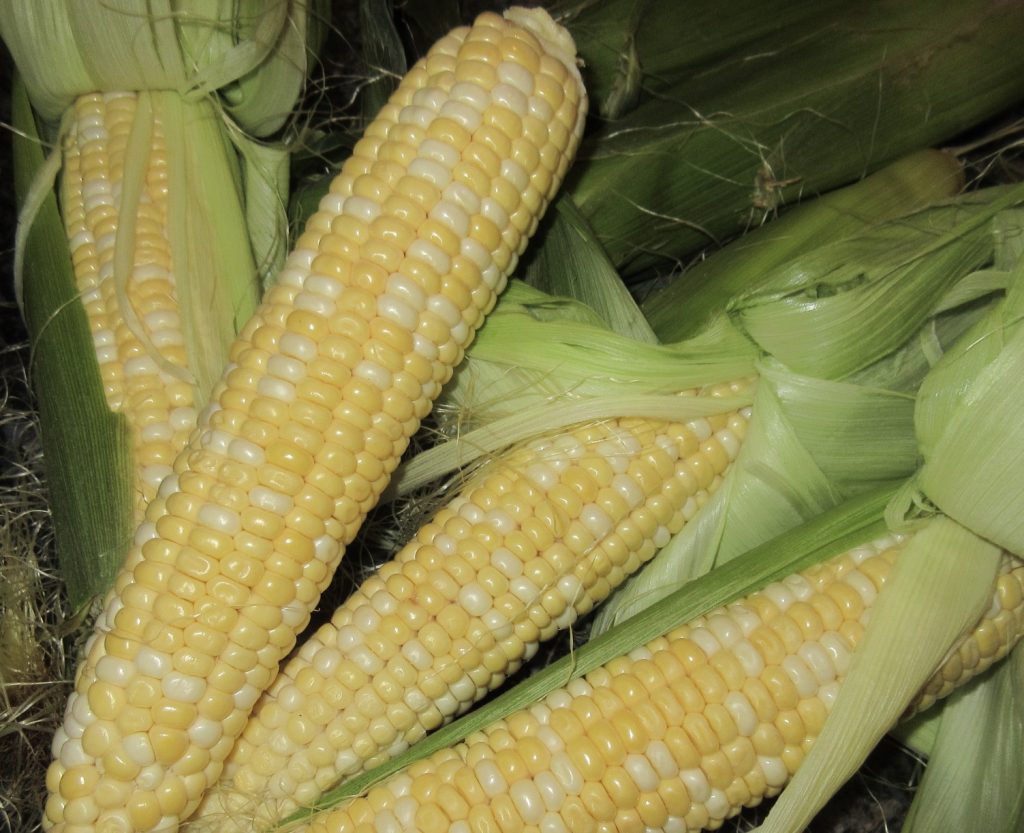
by Margot Callahan, Contributing Writer
“Uh, yeah, Margot, it’s Jake, we’re out of corn.” Jake, when he calls me, always begins by saying, “Uh, yeah, Margot, it’s Jake,” even though he knows his number comes up on my phone as Jake, so the introduction isn’t necessary. It never gets old for me, and always makes me smile. Sometimes, I mouth it along with him.
Ah, corn. When summer hits, in our parts, everyone looks for sweet corn to appear at farmer’s markets, roadside stands, the grocery store. Farmers can make a decent profit if their corn is good and has a reputation. Jake, working his land, and me marketing the heck out of it on social media, have created a clientele for his all-natural, pesticide-free sweet corn and everyone waits for it. It was with this expectation in mind that getting, “The corn is in!” notice from Jake just 10 days before he had me posting every other day about it being, “harvested daily, stop in, don’t miss out!”
Helping Jake promote his family’s market has forced me to learn a lot about farming. Corn loves warm and humid weather and having evening temperatures in the 70s is what makes it mature. Planting it at different times ensures that as one field finishes, there’s another to take its place, providing sweet corn, if Mother Nature is on your side, from late June into September. It was July 2nd, just before the biggest summer holiday and he was out of corn because his second planting was late.
“I called a farmer I know who probably has corn, but I haven’t heard back from him. Go on out there and see if you can pick up 10 dozen. You’ll see their roadside stand,” Jake assured, handing me a crossroad address. He knew that I would find it one way or another, asking whomever I saw or knocking on doors if I had to.
When I arrived at the farm, there was no one around. The main house doors and windows were open, so I knew that the family was on the multi-acre property, somewhere. Then, a grandmother came out of her small, adjacent home that you’ll often see on Amish property. Most senior Amish live on or nearby one of their children’s property, helping with the grandkids, cleaning and baking. I went over and introduced myself. Hannah assured me that they had more than enough corn for me, but she didn’t know where the farmer was. I surveyed the 8-foot-high corn stalks behind me that stretched at least two football fields left to right. I expected Shoeless Joe Jackson to come out at any minute. Then my phone rang.
“Uh, yeah, Margot…” (Guess who.) “I got a message from the farmer, John Lapp, that he has enough corn for us.”
“I’m at the farm, but no one is around.”
“Can you look for him?”
“Jake. Do you know how big this farm is?”
Jake laughed.
“Yeah, I’ll see if I can find him,” I said, relenting, and began to walk in the 90+ degree, high-humidity day.
About 10 minutes later, I came around the corner to an opening of about 8 rows of sowed corn wide, (about 2 feet between each row) and could see a horse and a young woman about 200 feet away. “All right!” I thought. As I neared, what I could now see was a farmer and his two early-teen kids, “Hi! Are you John Lapp? I’m Margot. Jake sent me for some corn.” I telephoned Jake and while he and John negotiated the price, I wondered if there wasn’t a quicker way to get back to the van.
“If you don’t mind the corn stalks, you can go straight through there.” John motioned to a wall of stalks about six inches apart that you couldn’t see more than three feet into. If a young Kevin Costner was on the other side, then I was all in. I smiled and parted my first row and was immediately in another world. So green, so much dappled sunshine, and I giggled and then thought, so much opportunity to get lost if I didn’t keep my wits about me.
Once I pulled the van up to the end of the row, John’s son helped me load the corn. “What for Jake?” he asked. Oh, the Amish syntax and translation from PA Dutch to English. I thought that he was asking which family of Lapp’s Jake was from – if he was related in some way, so I asked him if he wanted to know who Jake’s parents were? He considered me as if I was an idiot, (he is a teenager) and said, “No. Does he have a market or what?” I may in fact be an idiot. Of course that’s what “what for” means.
Loaded and on my way, I wondered if this corn was all-natural and pesticide-free like Jake’s. Back at the market, we started talking about the difference between his corn and “sprayed,” and how if there’s a worm in his corn, it would be at the tip and he simply knocks it away. “Customers are fine with a worm here or there because that means it’s natural,” he assured me. Corn sales, especially around July 4th, can make or break a small farm like Jake’s. I decided it was none of my business if he would tell his customers where he got this corn. The next day, I saw the sign, “Local corn, bi-colored.” He had dropped the price because it wasn’t his. That’s “what for” Jake.
***

